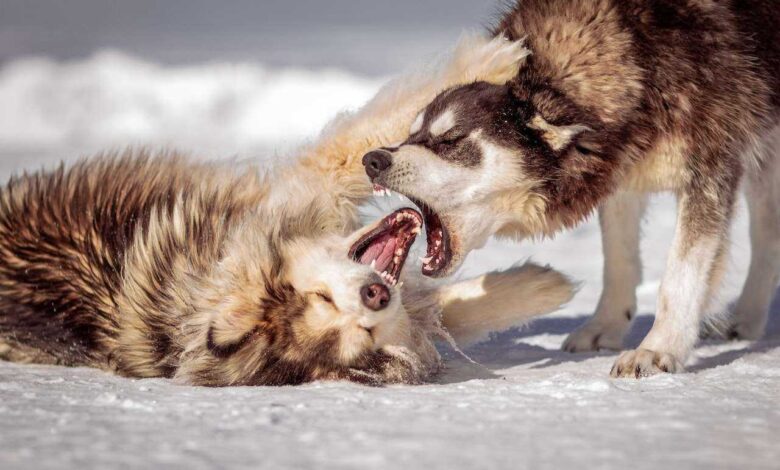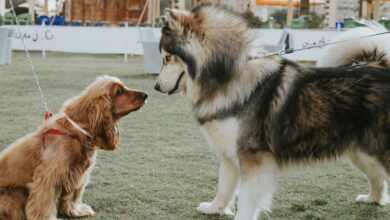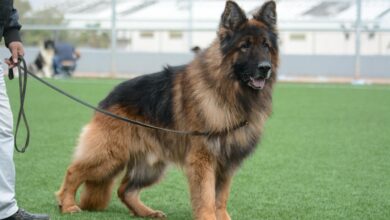
Dealing with aggression. Addressing aggression in pets is essential for maintaining a harmonious and safe environment for both your pet and those around them. In this comprehensive guide, we will explore the complexities of pet aggression, offering insights into understanding the types of aggression and identifying potential triggers. We’ll also provide practical tips for safely modifying your pet’s behavior, ensuring a happier and healthier relationship between you and your furry companion.
Dealing with Aggression
To effectively manage and modify aggressive behavior in pets, it’s crucial to have a solid grasp of the various forms of aggression and the underlying triggers that contribute to this behavior. This understanding serves as the foundation for implementing successful behavior modification techniques.
Types of Aggression
- Territorial Aggression: This type of aggression occurs when a pet becomes overly possessive of its space and may exhibit aggressive behavior toward intruders or perceived threats within its territory.
- Fear Aggression: Fearful pets may react aggressively when they feel threatened or cornered. Identifying and addressing the underlying fear is essential when dealing with this type of aggression.
- Dominance Aggression: In multi-pet households, pets may engage in aggression as a means of establishing dominance or hierarchy.
- Resource Guarding: Some pets become aggressive when guarding their possessions, such as food, toys, or sleeping spots. This behavior stems from a sense of ownership and the need to protect valuable resources.
- Redirected Aggression: Pets may redirect their aggression toward a nearby person or animal when overwhelmed by external stimuli, even if the initial source of their frustration is different.
Identifying Aggression Triggers
- Environmental Factors: Changes in a pet’s environment, such as the introduction of new people or animals, alterations in their living space, or unfamiliar surroundings, can serve as triggers for aggressive behavior.
- Health Issues: Underlying health problems, pain, or discomfort can significantly contribute to aggressive behavior. Always consult with a veterinarian to rule out medical causes before addressing behavioral issues.
- Stress and Anxiety: High levels of stress and anxiety can substantially impact a pet’s behavior, potentially leading to aggressive tendencies. Identifying stressors and finding ways to manage anxiety is crucial.
- Socialization: Proper socialization during a pet’s formative months is pivotal in preventing fear-based aggression later in life. Early exposure to different people, animals, and environments helps build confidence and resilience.
- Lack of Exercise and Mental Stimulation: Pets with excess energy may resort to aggressive behaviors out of frustration. Regular exercise and mental stimulation are essential to prevent pent-up energy from turning into aggression.
Tips for Safe Behavior Modification
Once you’ve identified the type of aggression your pet is displaying and the triggers behind it, you can begin the process of behavior modification to address and manage the issue effectively.
1. Consult a Professional
Dealing with aggression can be a complex and potentially risky undertaking. It’s highly advisable to seek guidance from a professional, such as a certified pet behaviorist or an experienced dog trainer with expertise in aggression cases. These experts can assess your pet’s specific issues and create a customized behavior modification plan tailored to their needs.
2. Positive Reinforcement Training
Positive reinforcement training is a powerful tool for modifying aggressive behavior in pets. This technique involves rewarding desired behaviors with treats, praise, and affection while ignoring or redirecting undesirable actions. By reinforcing positive behaviors, you build trust and reduce fear in your pet.
3. Gradual Desensitization
Desensitization is the process of exposing your pet to the source of their aggression in a controlled and gradual manner. For instance, if your dog is aggressive towards strangers, start with distant and brief encounters, rewarding calm behavior. Over time, you can gradually decrease the distance and increase exposure, always ensuring safety.
4. Counterconditioning
Counterconditioning focuses on changing your pet’s emotional response to a specific trigger. For example, if your cat is aggressive when handled, pair handling sessions with treats to create a positive association. This can help reduce fear and aggression during handling.
5. Medication
In severe cases of aggression, a veterinarian may recommend medication to reduce anxiety or aggression. These medications are often used in conjunction with behavior modification techniques to address underlying issues effectively. Always consult with a veterinarian before considering medication.
6. Avoid Aggression Triggers
Identify and avoid situations or stimuli that trigger aggression whenever possible. For example, if your dog displays aggression towards other dogs, maintain a safe distance during walks to prevent confrontations. Gradually work on desensitizing them to these triggers under professional guidance.
7. Consistency and Patience
Consistency in training and patience are essential when modifying aggressive behavior. Behavior modification takes time, and setbacks are common. Stay committed to the process, and don’t become discouraged by slow progress. Celebrate small victories along the way.
8. Safety Measures
Ensure the safety of all involved parties. If your pet has a history of aggression, consider using muzzles or leashes
during interactions with strangers or other animals. Always prioritize safety to prevent potential harm.
9. Regular Exercise and Mental Stimulation
Provide your pet with ample physical exercise and mental stimulation. A tired pet is less likely to exhibit aggressive behavior due to excess energy or frustration.
Dealing with Aggression
Addressing pet aggression is a multifaceted process that requires understanding, patience, and professional guidance. Remember that each pet is unique, and behavior modification may require tailored approaches. Consult with professionals, remain patient, and prioritize your pet’s well-being throughout the process. With dedication and proper guidance, many pets can overcome aggressive tendencies and lead happy, balanced lives.







